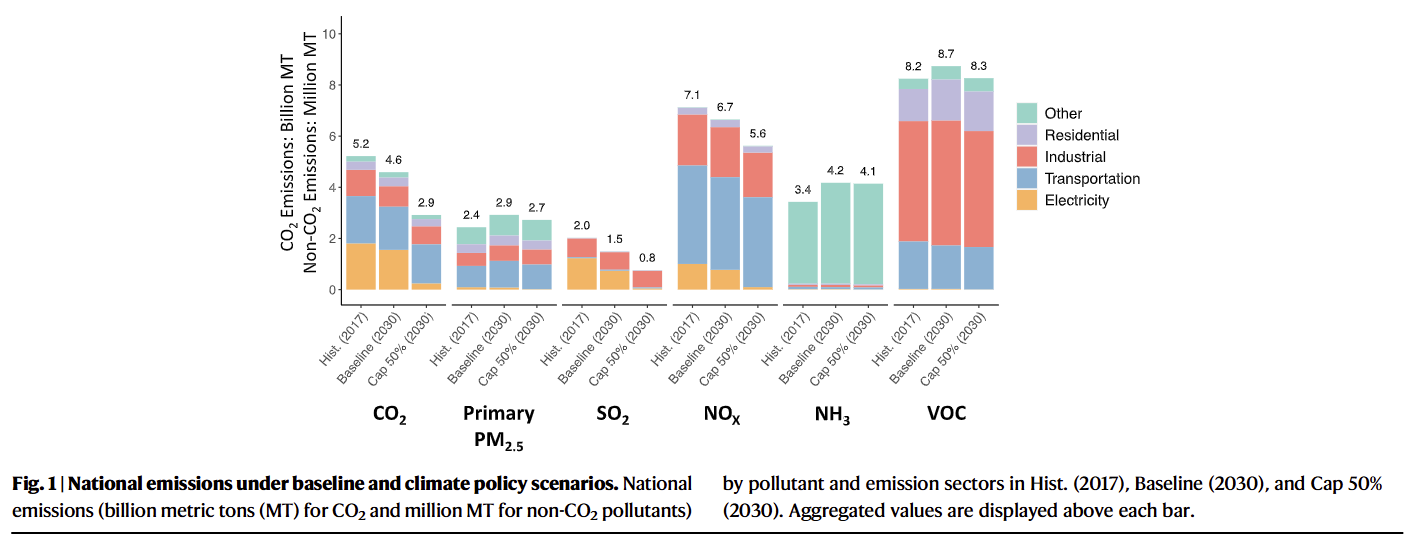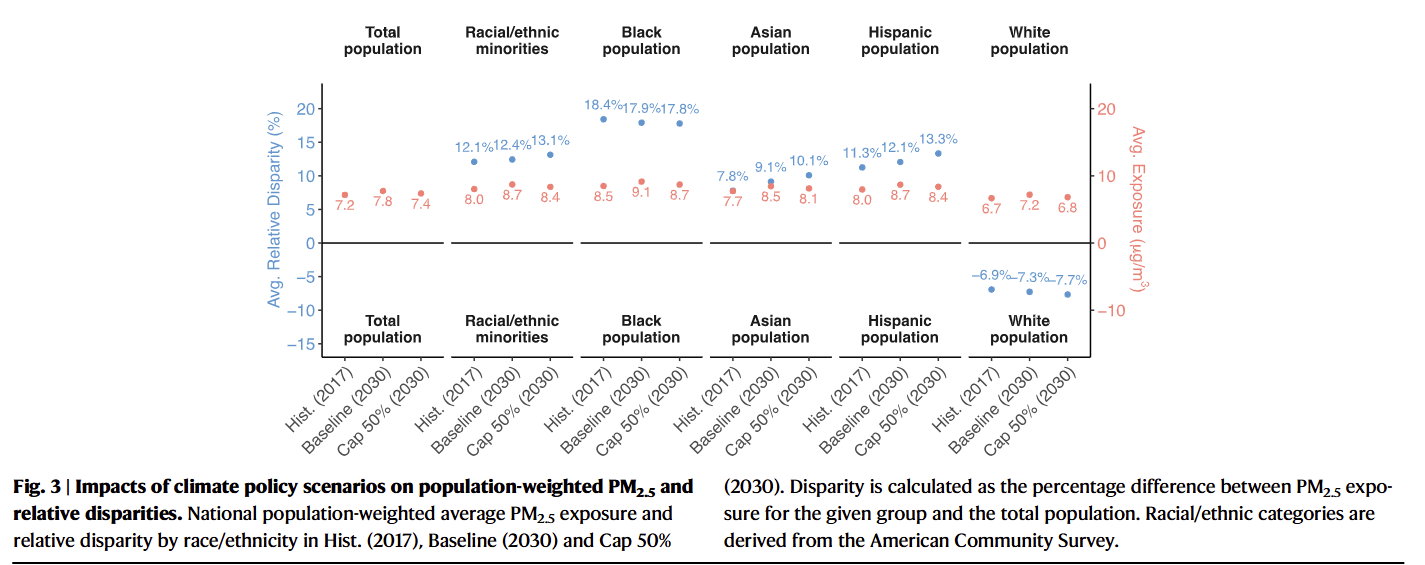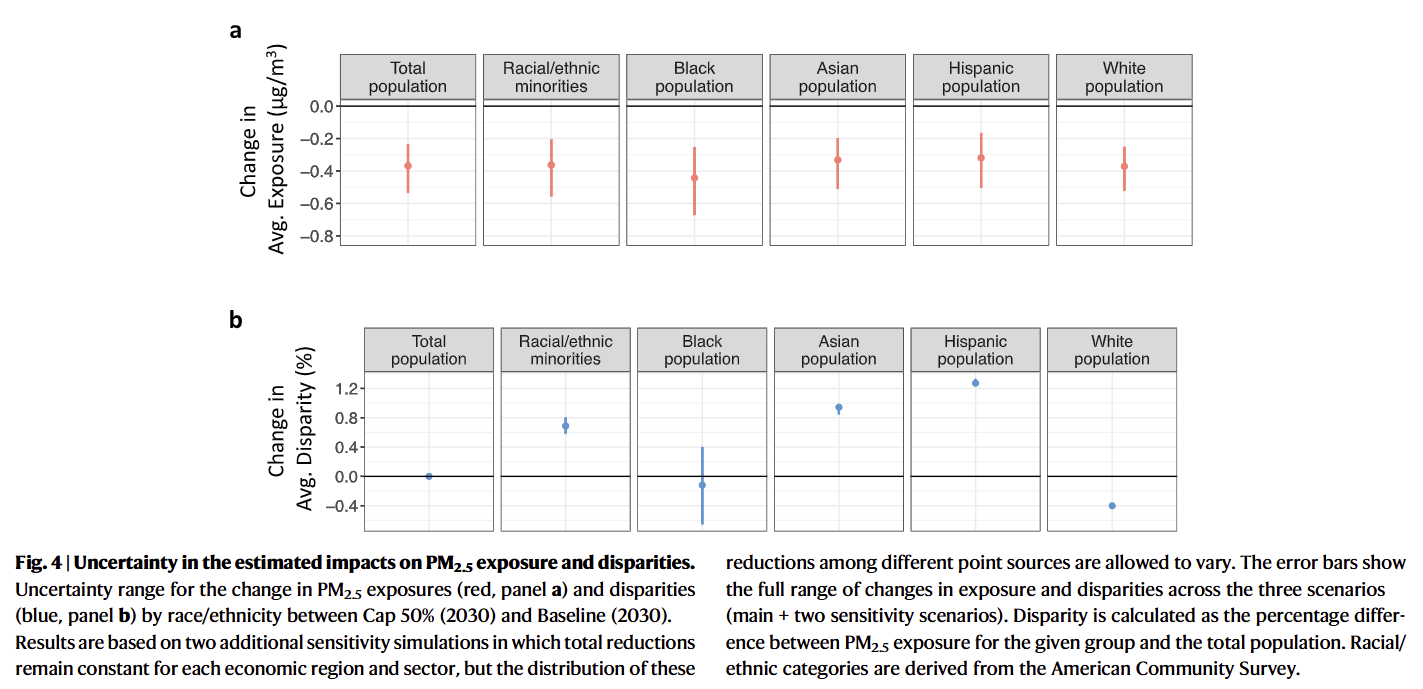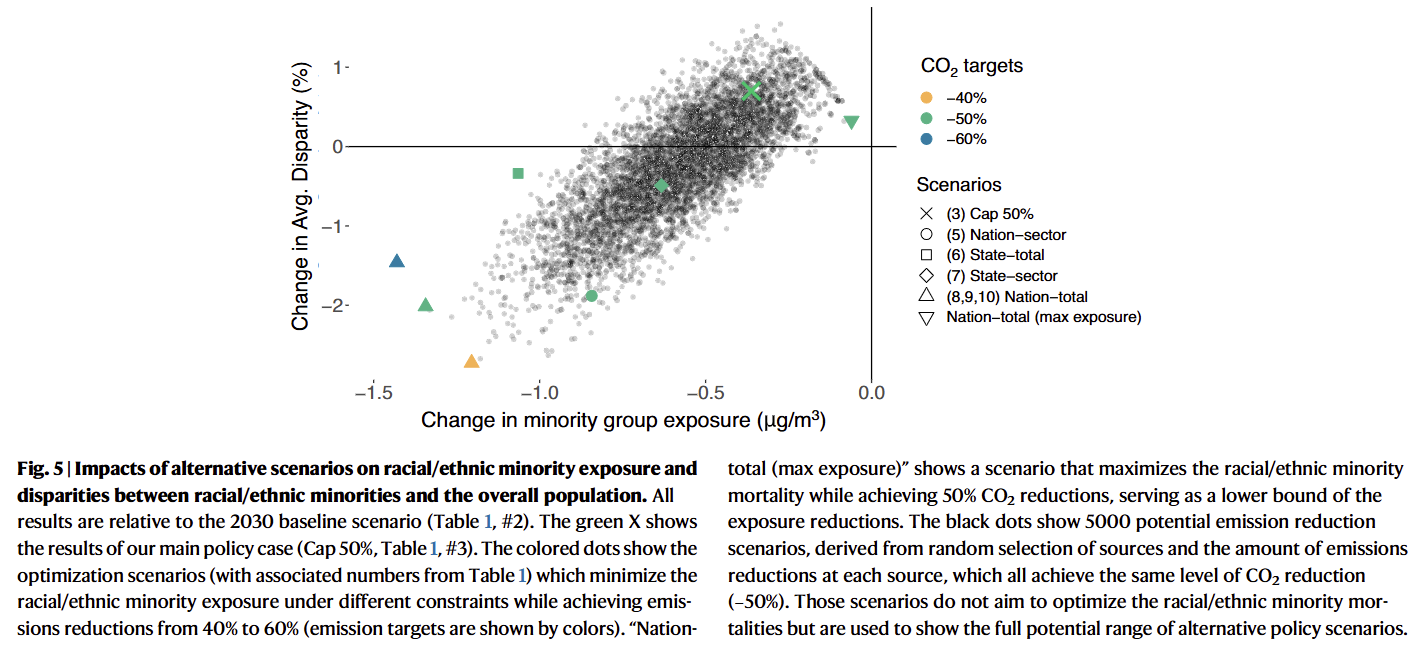Objective:
- Examine the underlying fundamental question of whether and to what extent national CO2 policy with an ambition level comparable to near-term federal goals can mitigate racial/ethnic disparities in air pollution exposure
Case:
Methodology:
- Economy-wide, energy-economy modelling tool (USREP-ReEDS)
Data Source
Findings:
- CO2 emission reductions relative to baseline in 2030 are driven mostly by the electricity sector, followed by transportation, industry, and residential and commercial sector.

- Air pollution exposure decreases for all racial/ethnic groups in the primary policy cases

- It doesn’t reduce exposure disparities at the national level

- A considerable amount of heterogeneity at the state and urban area level


Coding Reference:





